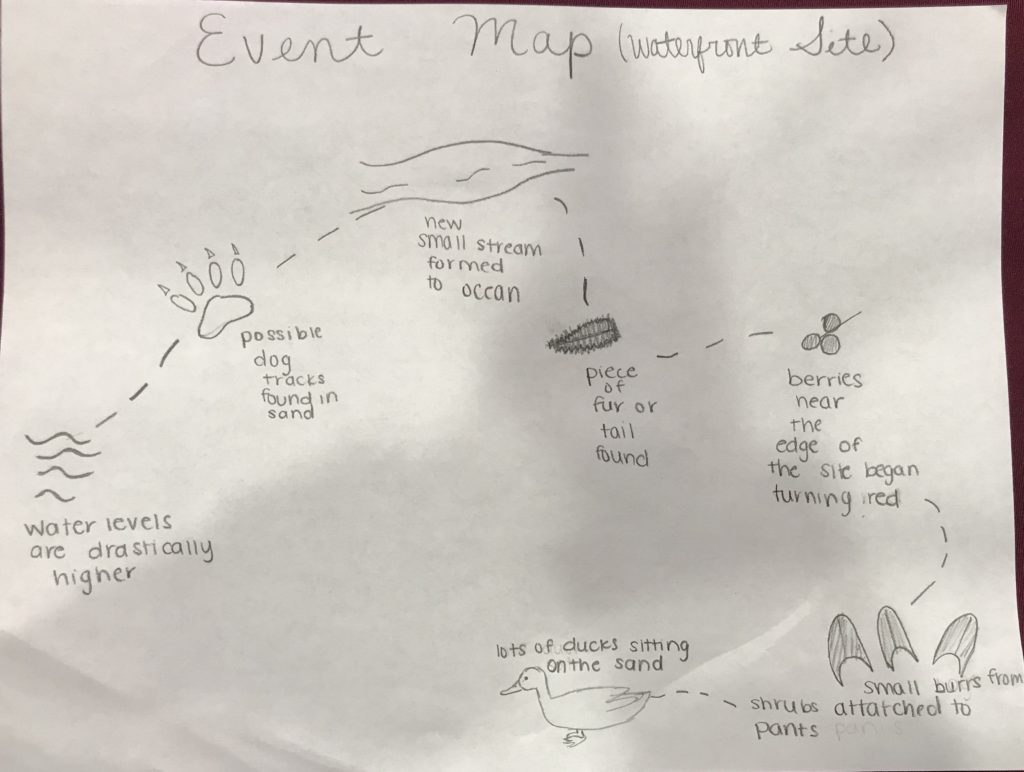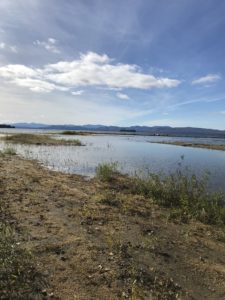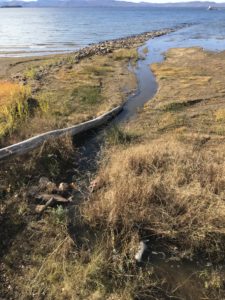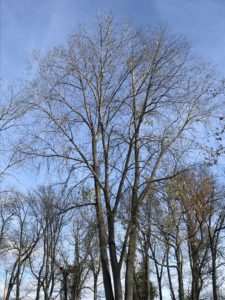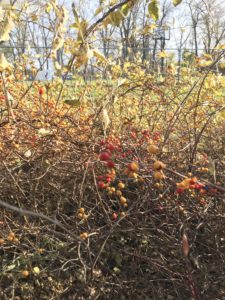Location: GreenBrook River Shoreline
Date: November 18th, 2018
Weather: Cloudy, Cold, 26 degrees
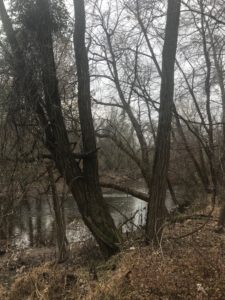
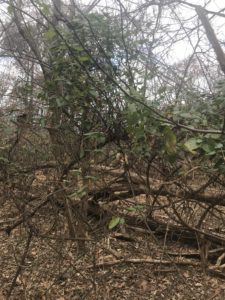
GreenBrook River Spot:
For Thanksgiving break, I chose a spot in the woods by the Greenbrook river that flows through my town in New Jersey. I chose this spot because it is very close to my house and is one of the few natural areas around where I live. Because I live in the suburbs of New Jersey, there are not that many nature preserves or nice parks that close to me , but I felt like this spot was good because it was right near me and was situated near this river. I noticed that the soil was very dark in this area and was mostly very wet with the melting snow and rain. I looked up the bedrock in this area and they said it was mostly shale, sandstone, and clay. Despite the fact that they said the soil in this area would be very sandy, I found that this soil had a lot more clay in it, and my area in Burlington had a lot more sand. Also, I noticed that all the trees in this area had completely lost all their leaves and that there were no evergreen trees around at all. I believe that the main tree species around here are Red Maple and Hazel Adler. I did notice that there was one small woody shrub that was growing around the river area and that it was still green and had some berries on it. In addition, I could see a lot of deer prints in the mud, which showed that they were a main animal species in this part.
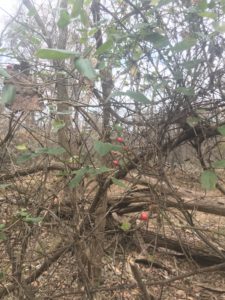

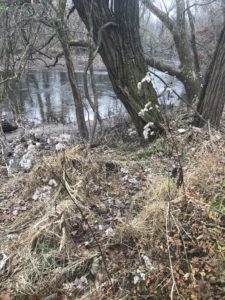
Red Berries on Woody Shrub
Comparing Landscapes:
My phenology spot in Burlington is drastically different than my spot here in New Jersey. I tried to pick a spot on the water so it would be more similar, but the similarities basically end there. Since my spot in Burlington is near the shoreline, the soil is mostly sandy and fine, but here the soil is very clay-based and thick. Also, the soil in Burlington is very well-drained and even after a rainfall is not very wet, however near the river in New Jersey, the soil was extremely wet and was very thick and muddy. I had to be very careful not to fall in while scouting the area. Although this was negative for me, it was positive because I could observe all the animal prints left in this mud. I saw some small prints, most likely squirrels and I saw a lot of large deer prints because they are so common around this area. In Burlington near my shorefront area, I see a lot of birds and find evidence of small animals like raccoon, but I have never seen any larger animals like deer in that area. Also, I felt like my phenology spot by the river was a lot more brown and less colorful, but I can attribute that to the fact that the black willow shrubs are still green and grow everywhere in my shoreline spot, but here almost everything has died off at this point. I really enjoyed looking at these different spots and seeing how different my hometown is compared to Burlington. Although both are beautiful and different, I do feel my sense of place is stronger closer to my home.
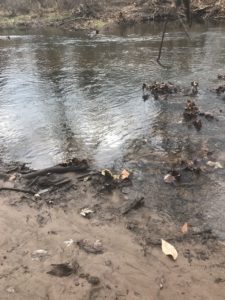
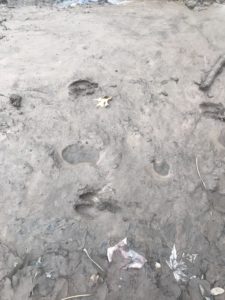
The Soil and Stream Deer Tracks in the deep mud
Middlesex:
GreenBrook River Phenology spot:
https://www.google.com/maps/d/edit?hl=en&hl=en&mid=1CVSEuNZfP7wlSZ7_Fo82aDBheeko7izJ&ll=40.57465266340505%2C-74.52145649676487&z=17
